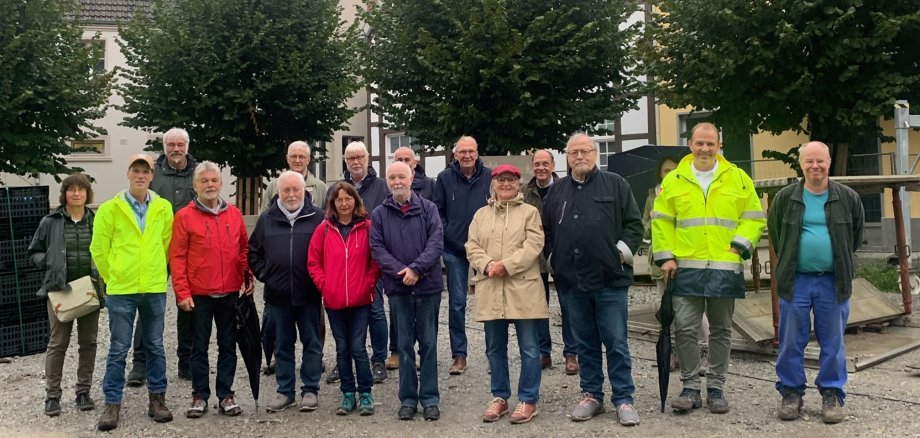Excavations on St Stephen's church square
Over 40 interested people on the guided tour of the city archaeological centre
Since the urban archaeology team took over the sceptre on the church square in Beckum, numerous finds relating to the historical development of the urban area and the history of Beckum's urban society since the Middle Ages have been recovered. In addition to various individual finds, such as a large gravestone from the 15th century, the excavation team also discovered a fragment of a so-called pilgrim's horn. Remains of the former bridal portal also came to light on the north side of the Gothic provost church. The name refers to the medieval custom of marrying in front of the church portal and then entering for mass. In addition, more than 200 burials, including children's graves, have now been examined.
"Based on the remains, we can also determine whether unfavourable living conditions and malnutrition were responsible for the high mortality rate in the early modern period," explains excavation manager Dr Joachim Meffert. The oldest burials are stone box graves from the 13th century, i.e. from the period when Beckum was founded. The city archaeologists are therefore not only uncovering structural relics, but can also provide unique insights into the lives of the deceased inhabitants of Beckum. "As we are celebrating the 800th anniversary of the town next year, these findings will also provide important insights for research into the local history of the town," says Marianne Witt-Stuhr from Beckum's town marketing department.
In order to provide an insight into this valuable historical work before the end of the excavation work, the Museum Association of the Beckum City Museum is offering a presentation in the public part of this year's general meeting on 19 October at 6:30 pm: Here, excavation manager Dr Joachim Meffert will report on the archaeological work and classify the finds historically. Please register for the lecture: brede@beckum.de

